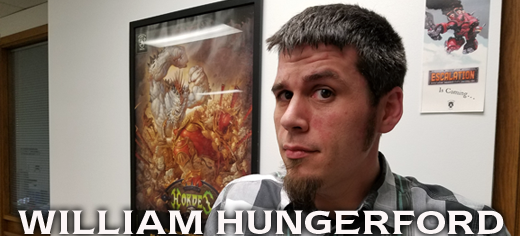
Insider 6-14-2017

In just a few weeks Steamroller 2017 (SR2017) officially goes live—the Monday after Lock & Load in fact! That’s July 17th, for the record.
Now, that being said, before we jump into a future where SR2017 exists out in the world, let’s look back at how we got here. Specifically, let’s take a gander at the SR2017 Community Integrated Development (CID) cycle that wrapped up recently. Like most of our upcoming theme forces and model releases, SR2017 went through a CID cycle during which many of you playtested the new scenarios, tournament rules, variants, and so much more.
Thank you!
The amount of feedback we received during this CID cycle was amazing, not just in terms of quantity but also quality. Which makes sense. SR2017 is something that affects so many of you, no matter what Faction you play, and it’s also something that so many of you are passionate about. Thanks to your feedback, we feel SR2017 is the best tournament packet we’ve ever created.
For those of you who participated, there are some significant changes you’ll want to know about that occurred after the CID cycle and final release. For example, two scenarios had their maps redesigned post-CID: Outlast and Recon II. Your battle reports showed us which scenarios weren’t quite live enough given the design intent of SR2017, and we were able to reconfigure the scenario elements to offer what we feel will be a much more engaging play experience.
Speaking of scenario experience, we’ve also changed how many more CPs a player has to score than the opponent to win via the “mercy” rule. Throughout CID, that number was 6, but we’ve since dropped it to 5—again, thanks to all of your great feedback. Now, assassination and attrition are far stronger in SR2017 than they’ve been in the past, but winning via scenario is still viable, though not quite as viable as it was in previous years (see: jamming your opponent out and winning without much interaction).
Speaking of scoring, we’ve also changed what types of models can score on which scenario elements. Not a huge change, but a significant one. Casters can still score anything; ’jacks, beasts, and battle engines still score rectangular zones; and units still score circular zones. However, solos can no longer score circular zone. Instead, solos can now score flags! So, quick recap: that’s units = circular zones, ’jacks/beasts/BEs = rectangular zones, solos = flags, and casters = anything.
Now, I won’t be listing every single tweak or change we made post-CID in this Insider, but those are definitely a few of the bigger ones.
There’s one more topic I should mention here, one that sparked some particularly lively discussion during the CID cycle: table marker restrictions. The language for this section of the rules went through several revisions and adjustments. We listened, we discussed, we worked and reworked the language. Regardless of where you stood on this issue, thank you for voicing your opinion! We do greatly appreciate all of your thoughtful and sincere contributions.
And now, let’s conclude this Insider with the final language regarding tokens, templates, proxy bases, table markers, and measuring devices as it will appear in SR2017 when it goes live next month:
Tokens and templates represent in-game effects such as focus, fury, spells, AOE effects, etc., and should be placed next to the affected model(s) or on the appropriate area of the board. Players can only have tokens or templates on the table that represent an in-game effect that is currently in play. All other tokens and templates should be removed from the table or stored on an area of the table that does not interfere with gameplay.
A proxy base represents a model that cannot physically fit into a space on the table due to terrain features or other models. A proxy base must be labeled or marked to indicate which model it represents and the facing of the model. As soon as it is possible to replace a proxy base with the actual model it represents, a player must do so.
A table marker is an item used by a player to mark a specific place on the board that does not represent an in-game effect or a model’s current placement. For example, a player might use a table marker to indicate the threat range of an enemy warjack or to determine if a friendly model will fit into a specific space after charging an enemy. Players can use only the following items as table markers: 30 mm, 40 mm, 50 mm, and 120 mm markers; 3˝, 4˝, and 5˝ AOE templates; wall templates; and small beads or coins.
A player cannot have more than two table markers on the table at any time. If you place a third table marker on the table, you must immediately remove at least one of your other table markers. This limit does not apply during deployment. Players can use any number of table markers to mark the edge of their deployment and advance deployment zones but must remove those markers before the first turn begins.
A measuring device is any item other than a table marker or proxy base whose express purpose is to measure a distance or to aid in measuring a distance. Examples of measuring devices include tape measures, war sticks, and melee gauges. A player cannot leave any measuring device on the table while not actively making a measurement.
A player can make a single continuous measurement at any time and can use any number of measuring devices when making this measurement. Measuring devices that are not part of the current measurement must be removed from the table. In addition to the single continuous measurement, a player can also mark the melee ranges of his opponent’s models during his turn.
